A Synopsis of Galapagos Plant Life’s History

Tomás de Berlanga described the Galapagos Islands when he first saw them: “It looked as though God had caused it to rain stones.” Guests may find his views a bit harsh considering how populated and well-documented the islands are now. But for these early explorers, the archipelago was as enigmatic and sublime back then as space travel was. If one were to travel back many thousand years, the Galapagos Islands would have resembled the early Earth’s surface. The Galapagos offers various opportunities for studying time and the origin of life. How it all came here is the same issue that this little group of islands is plagued by.
The Galapagos Islands’ Plant Life History: How Did It All Arrive?
This kind of cactus develops on bare lava flows, as its name suggests.
A total of 552 plant species have been identified in the Galapagos, of which 372 are considered native and 180 are endemic. The others have been introduced. It’s important to remember that 33% of all plant life in the Galapagos is made up of indigenous species. That means that almost one-third of the plants you see in the Galapagos are unique to this part of the planet!
It is also noteworthy that seventy percent of the vegetation on the islands is native to South America. The remainder originated in tropical regions.
The percentage below shows how significant an impact each of the following is thought to have had in the movement of seeds and plant life to the Galapagos:
- Ocean Drift: 6%
- Wind: 22%
- Humans: 32%
- Birds: 40%
But where did they actually settle down once they got there, and how? Ultimately, the islands were initially rather barren and unusable. But perhaps we might get a hint by returning to the cloud cover in the Highlands. Few, strong competitors are said to have been able to enter the ring, command the atmosphere, and utilize all of the moisture available because of the development of this humid niche. Higher elevations would prove to be beneficial for early species because character displacement—an evolutionary process involving the divergence of coexisting species—was made possible by these damp regions. Interestingly, the daisy—the simplest plant of all—went through this procedure in the Galapagos Islands. Eventually, this small blossom moved into the cloudier parts of the islands and adapted, eventually becoming the tree that is now known as scalesia. Yes, one might describe scalesia as a daisy tree.
Noteworthy observation: Character displacement also took place when it became evident that all the nutrients in these trees growing in the cloud forest could be taken out, particularly as the trees started to decay. Woodpeckers were necessary, but because there were none in the area, the finch, a little bird that subsequently gave rise to the species we now know as the woodpecker finch, was the closest competitor for the nutrient-rich niche.
Desolation & Distance: Where Great Things Have Little Beginnings
The Galapagos Islands’ South Plaza is well-known for its unique flora and animals.
As a result of volcanoes ejecting masses of Earth both upward and outward, the Galapagos developed into a diverse group of islands that differed greatly in terms of height and arrangement. In the end, this geological configuration and its location near the equator would provide the ideal conditions for supporting life.
First off, their location inside the ideal “brewing space” allows a unique range of weather patterns to emerge in the Galapagos Islands. An interesting dynamic arises between the outside air and water temperatures as a result of hot and cold currents (originating from the north and the south, respectively) clashing directly at the equator. These two come together at a location known as the “inversion zone,” which is essentially the meeting point of the hotter air above and the colder air hanging over the seas. Clouds are created by this confluence of elements, which float over the archipelago and become trapped in the higher regions of the larger islands.
The clouds that float above the archipelago are essentially caught by these rising mountains, which function as geological “nets.” Because of their exceptional ability to retain humidity, these earthly barriers can sustain their own ecosystem and themselves during the Galapagos Islands’ dry season.
This is the region where vegetation gradually began to appear on the islands, in the top parts where clouds hovered.
However, considering the harsh conditions in the Galapagos, how did anything manage to survive?
The flora of the Galapagos Islands varies in some areas during the dry and hot seasons.
There were hardly any pollinators on the islands, and there still aren’t many, considering how remote and barren the islands are. Plant life found the Galapagos Islands difficult to establish as a result. When a plant lacks a pollinator, it can only reproduce by wind or by self-pollination, which eventually became the most prevalent method. The Galapagos’ plant life was affected by this pollination pattern in an interesting way. Firstly, plants cloned themselves through self-pollination, thus they no longer needed to “groom” themselves to seem large, vibrant, and complicated to attract pollinators.

The cactus finch feeds mainly on seeds of Opuntia cacti.
The fact that the dry season in the Galapagos tends to last longer than the rainy season was another important aspect. Consider the dry season as a mild version of winter without the snow or extremely cold temperatures. The plants in this area have evolved and adapted to withstand these periods of resource scarcity. Accordingly, plants on the Galapagos Islands do indeed hibernate, albeit in quite peculiar ways.
RELATED STORIES
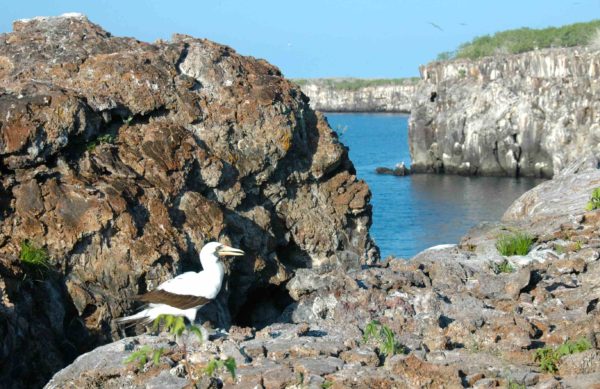
Interesting facts about the three types of boobies in the Galapagos

Food on a Galapagos Cruise: We’ve Got You Covered
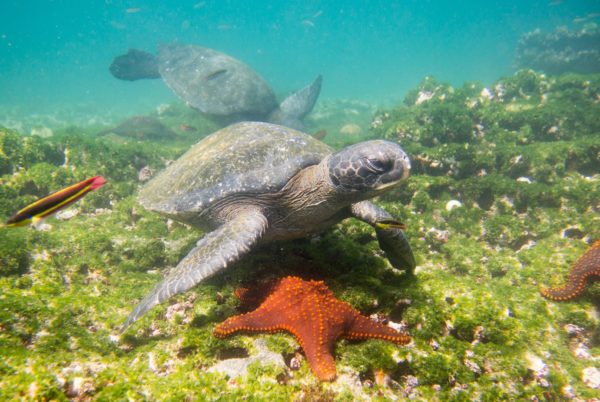
My Favourite Sea Turtle Experience Aboard the Santa Cruz II
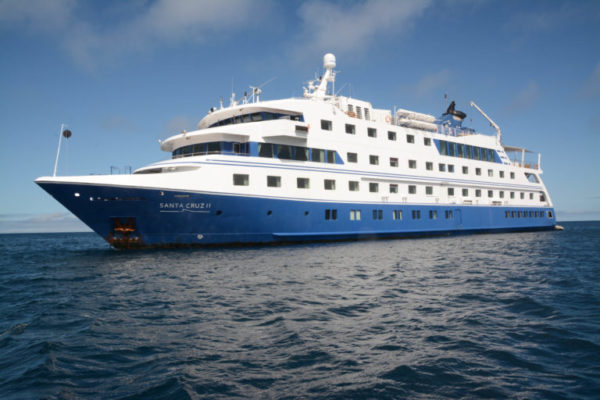
First Day Aboard the Santa Cruz II
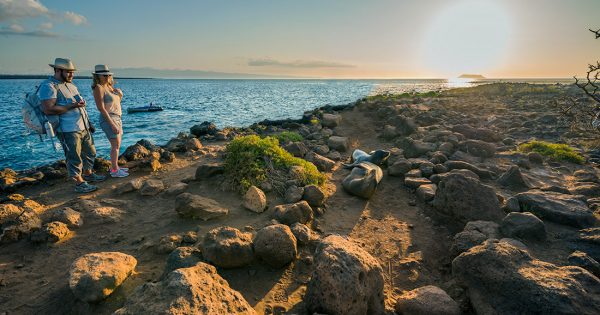
North Seymour Frigates and Boobies
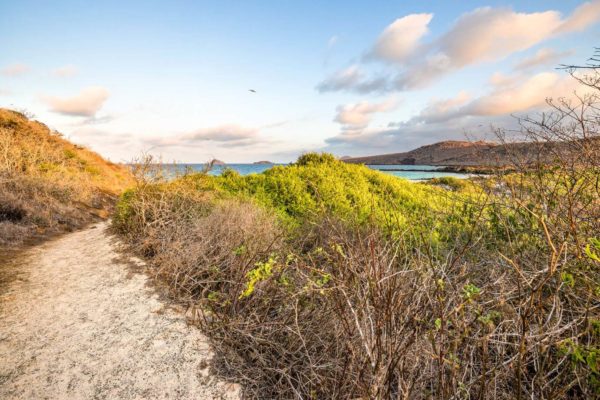
Ecuador Facts (Vol. I): An Interesting Collection of Natural Wonders and Achievements
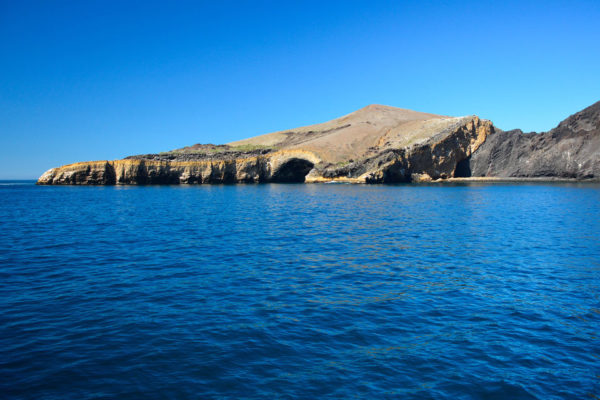
Galapagos Experience Testimonial
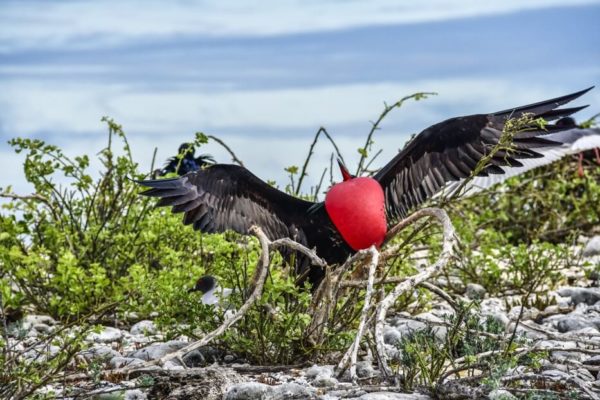
Galapagos Frigatebirds: A Colorful Medley of Courting & Nesting
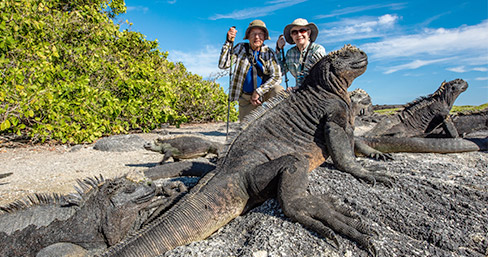
The Beauty of an Intimate Galapagos Vacation
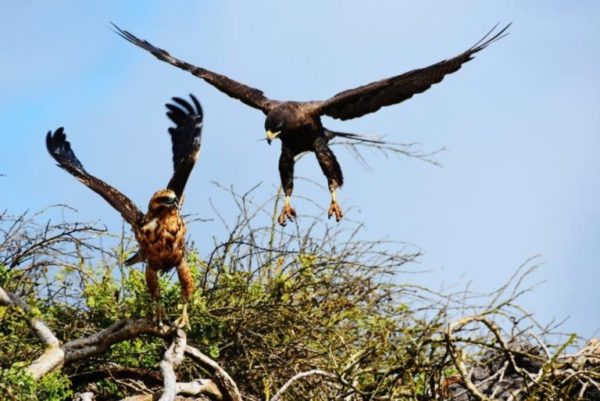
A Synopsis of Galapagos Plant Life’s History
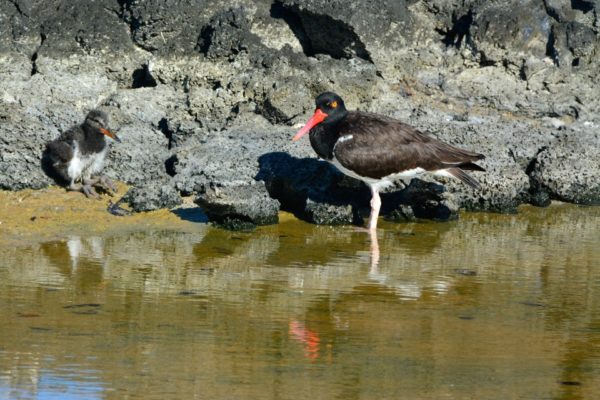
Hidden in Plain Sight: The Galapagos Baby Oystercatcher
